The 2026 FIFA World Cup, a quadrennial international soccer tournament, promises to captivate the world with its thrilling matches, global camaraderie, and unforgettable moments. Hosted jointly by the United States, Canada, and Mexico, this edition of the World Cup will be the first to feature 48 teams, expanding the tournament’s reach and excitement.
As the world eagerly anticipates the 2026 FIFA World Cup, let’s delve into the details that make this event so extraordinary, from the host cities and stadiums to the participating teams and cutting-edge technologies. We’ll also explore the tournament’s cultural impact, sustainability measures, and economic implications, providing a comprehensive overview of this global sporting spectacle.
FIFA World Cup 2026 Overview

The 2026 FIFA World Cup will be the 23rd edition of the FIFA World Cup, the quadrennial international men’s football championship contested by the senior national teams of the member associations of FIFA. It is scheduled to take place from June 8 to July 3, 2026, in the United States, Canada, and Mexico.
The tournament will be the first to feature 48 teams, up from 32 teams in the previous editions. The United States will host 60 matches, including the final, while Canada and Mexico will each host 10 matches.
Participating Countries
The 48 teams that will participate in the 2026 FIFA World Cup will be determined through a qualification process that will begin in 2023. The host nations, the United States, Canada, and Mexico, will automatically qualify for the tournament.
The 2026 FIFA World Cup is set to be a spectacular event, bringing together fans from around the globe. While in Europe for the matches, consider enriching your experience with cultural tours in Europe. Explore the rich history, art, and architecture of the host cities, creating memories that will last a lifetime.
From the vibrant streets of Paris to the ancient ruins of Rome, Europe offers a wealth of cultural treasures to discover, complementing the excitement of the World Cup.
Host Cities
The 16 host cities for the 2026 FIFA World Cup are:
- United States: Atlanta, Boston, Dallas, Houston, Kansas City, Los Angeles, Miami, New York/New Jersey, Philadelphia, San Francisco, Seattle
- Canada: Toronto, Vancouver
- Mexico: Guadalajara, Mexico City, Monterrey
Host Cities and Stadiums
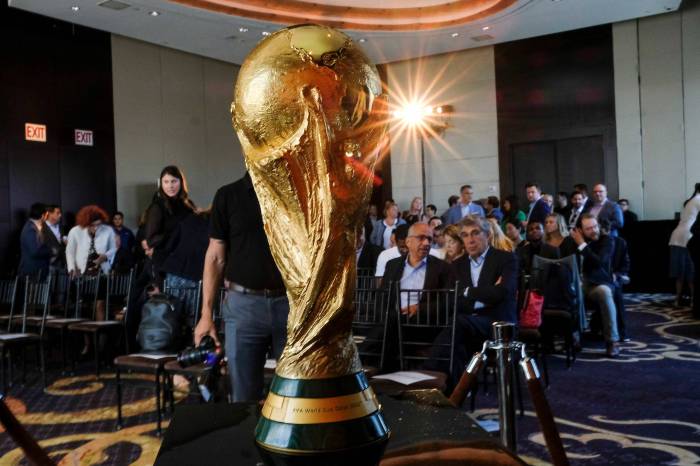
The 2026 FIFA World Cup will be hosted in 16 cities across the United States, Canada, and Mexico, each boasting state-of-the-art stadiums designed to provide an unforgettable experience for players and fans alike.
The host cities and their designated stadiums are:
United States
- Atlanta, Georgia: Mercedes-Benz Stadium (Capacity: 71,000)
- Boston, Massachusetts: Gillette Stadium (Capacity: 65,878)
- Dallas, Texas: AT&T Stadium (Capacity: 80,000)
- Houston, Texas: NRG Stadium (Capacity: 72,220)
- Kansas City, Missouri: Arrowhead Stadium (Capacity: 76,416)
- Los Angeles, California: SoFi Stadium (Capacity: 70,240)
- Miami, Florida: Hard Rock Stadium (Capacity: 64,767)
- New York/New Jersey: MetLife Stadium (Capacity: 82,500)
- Philadelphia, Pennsylvania: Lincoln Financial Field (Capacity: 69,596)
- San Francisco, California: Levi’s Stadium (Capacity: 68,500)
- Seattle, Washington: Lumen Field (Capacity: 69,000)
Canada
- Toronto, Ontario: BMO Field (Capacity: 30,000)
- Vancouver, British Columbia: BC Place (Capacity: 54,500)
Mexico
- Guadalajara, Jalisco: Estadio Akron (Capacity: 46,332)
- Mexico City: Estadio Azteca (Capacity: 87,523)
- Monterrey, Nuevo León: Estadio BBVA (Capacity: 51,348)
Each stadium offers unique features to enhance the fan experience. For instance, SoFi Stadium in Los Angeles features a massive LED screen that stretches the length of the field, providing an immersive viewing experience. The Estadio Azteca in Mexico City, the largest stadium in the tournament, boasts a rich history and passionate atmosphere.
Infrastructure and transportation plans surrounding the stadiums are designed to ensure smooth access for fans. Public transportation systems, including buses, trains, and subways, will connect fans to the stadiums efficiently. Additionally, ride-sharing services and designated parking areas will be available to facilitate transportation.
Team Qualification and Format
The 2026 FIFA World Cup will witness an expansion of participating teams from 32 to 48, representing an exciting new chapter in the tournament’s history. The qualification process and tournament format have been meticulously designed to ensure a fair and competitive competition.
The qualification process will commence in 2023 and will involve a series of regional tournaments and playoffs. Each confederation will be allocated a specific number of slots based on their performance in previous competitions and the strength of their teams. For instance, UEFA will have 16 slots, CONMEBOL will have 6, and CAF will have 9.
The tournament format will consist of two stages: the group stage and the knockout stage. In the group stage, the 48 teams will be divided into 16 groups of 3 teams each. Each team will play every other team in their group once, resulting in a total of 2 matches per team. The top 2 teams from each group will advance to the knockout stage.
The knockout stage will consist of a single-elimination bracket, with the 32 qualified teams competing in a series of matches to determine the eventual champion. The knockout stage will include the round of 16, quarterfinals, semifinals, and the final.
Group Stage
- 48 teams divided into 16 groups of 3 teams each
- Each team plays every other team in their group once
- Top 2 teams from each group advance to the knockout stage
Knockout Stage
- 32 teams competing in a single-elimination bracket
- Round of 16, quarterfinals, semifinals, and final
- Winner of the final match is crowned the FIFA World Cup champion
Notable Players and Teams

The 2026 FIFA World Cup is set to feature some of the most talented players and teams in the world. With the expansion to 48 teams, there will be even more opportunities for stars to shine and for underdogs to make a name for themselves.
The top-ranked teams in the FIFA World Rankings are sure to be among the favorites to win the tournament. These teams include Brazil, Argentina, France, England, and Spain. These teams have a wealth of experience and talent, and they will be looking to add to their trophy cabinets.
However, there are a number of other teams that could also make a deep run in the tournament. These teams include Germany, Portugal, the Netherlands, and Uruguay. These teams have all shown that they can compete with the best in the world, and they will be looking to make a statement in 2026.
Key Players to Watch
There are a number of key players who are expected to have a major impact on the 2026 FIFA World Cup. These players include:
* Kylian Mbappé (France)
* Erling Haaland (Norway)
* Vinícius Júnior (Brazil)
* Lionel Messi (Argentina)
* Cristiano Ronaldo (Portugal)
These players are all capable of changing the game with a single moment of brilliance, and they will be looking to lead their teams to glory in 2026.
Technology and Innovations
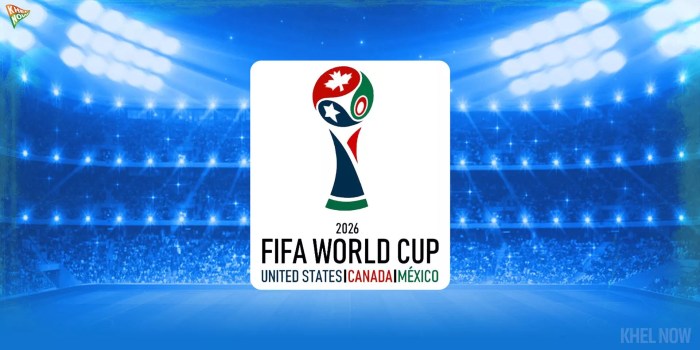
The 2026 FIFA World Cup is set to witness significant technological advancements and innovations aimed at enhancing the accuracy and fairness of the game. These innovations include the use of VAR (Video Assistant Referee), goal-line technology, and other cutting-edge tools.
VAR (Video Assistant Referee)
VAR has been a game-changer in the world of football, allowing referees to review controversial decisions using video replays. In the 2026 World Cup, VAR will be further refined and integrated into the game’s fabric, ensuring that decisions are made with the highest possible accuracy.
Goal-Line Technology, 2026 fifa world cup
Goal-line technology is a system that uses sensors and cameras to determine whether the ball has fully crossed the goal line. This technology has eliminated the need for subjective judgment calls and has ensured that goals are awarded correctly.
Other Enhancements
In addition to VAR and goal-line technology, the 2026 World Cup will also feature other technological enhancements, such as:
- Electronic Performance and Tracking Systems (EPTS): These systems will provide real-time data on player performance, such as speed, distance covered, and acceleration.
- Smart Stadiums: The stadiums used in the 2026 World Cup will be equipped with advanced technologies, such as facial recognition, mobile ticketing, and interactive fan experiences.
- Augmented Reality (AR) and Virtual Reality (VR): AR and VR technologies will be used to enhance the fan experience, providing immersive and interactive ways to engage with the tournament.
Cultural Impact and Legacy
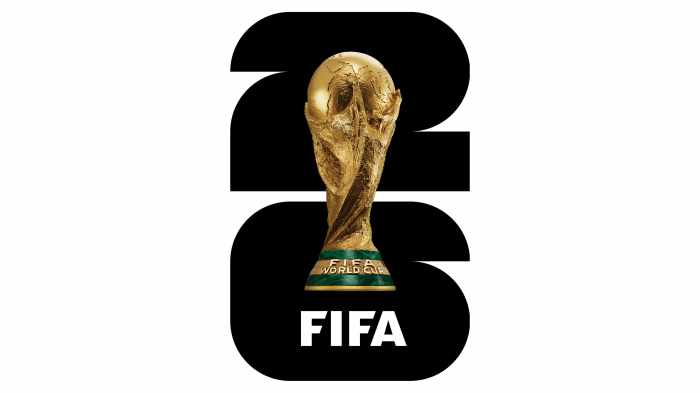
The FIFA World Cup 2026 will undoubtedly have a profound cultural impact on the host countries, the United States, Canada, and Mexico. The tournament will bring together people from all over the world, fostering a sense of global unity and cultural exchange.
Infrastructure Development
The World Cup will necessitate significant infrastructure development in the host cities, including the construction of new stadiums, transportation networks, and accommodation facilities. These investments will not only enhance the infrastructure of the host cities but also leave a lasting legacy for future generations.
Tourism
The World Cup is expected to attract millions of tourists from around the world, providing a significant boost to the tourism industry in the host countries. Visitors will have the opportunity to experience the unique cultures and attractions of the United States, Canada, and Mexico, contributing to economic growth and promoting cross-cultural understanding.
As the excitement builds for the 2026 FIFA World Cup, it’s time to start planning your unforgettable journey to the world’s most prestigious soccer event. While you’re immersing yourself in the electrifying atmosphere, take advantage of luxury travel tips to enhance your experience.
From exclusive accommodations and private transportation to tailored tours and VIP access, elevate your World Cup adventure to a whole new level, ensuring that your memories of this once-in-a-lifetime event will last a lifetime.
Social Cohesion
The World Cup can serve as a catalyst for social cohesion within the host countries. The shared experience of cheering for their teams and celebrating the tournament can help to break down barriers and promote a sense of unity and pride among the citizens of the host nations.
The excitement for the 2026 FIFA World Cup is building, and many fans are already planning their trips to experience the tournament and explore the host cities. While in Europe, consider enriching your trip with cultural tours in Europe.
Immerse yourself in the history, art, and traditions of these vibrant cities, creating a memorable experience that complements the thrill of the World Cup.
Sustainability and Environmental Impact

The 2026 FIFA World Cup aims to be the most sustainable World Cup in history. FIFA has implemented various measures to reduce the tournament’s environmental impact, including:
- Using renewable energy sources to power stadiums and other facilities.
- Promoting the use of public transportation and electric vehicles.
- Implementing waste reduction and recycling programs.
- Educating fans and visitors about environmental issues.
Challenges and Opportunities
Balancing the tournament’s environmental impact with its economic and social benefits presents both challenges and opportunities. On the one hand, the tournament can raise awareness of environmental issues and promote sustainable practices. On the other hand, the large number of fans and visitors traveling to the host cities can strain local resources and infrastructure.
FIFA and the host cities are working together to mitigate these challenges and maximize the opportunities. For example, FIFA is providing funding for sustainable infrastructure projects in the host cities. The host cities are also implementing traffic management plans and promoting the use of public transportation.
The 2026 FIFA World Cup has the potential to be a catalyst for positive change in terms of sustainability. By implementing innovative solutions and raising awareness of environmental issues, FIFA and the host cities can create a lasting legacy for the tournament.
Economic Impact and Tourism

The FIFA World Cup is a significant sporting event that has a substantial economic impact on host countries and the global economy. The 2026 FIFA World Cup, hosted jointly by the United States, Canada, and Mexico, is expected to generate billions of dollars in revenue and boost tourism in the host countries.
The tournament will attract millions of visitors from around the world, providing a major boost to the tourism industry in the host cities. Hotels, restaurants, and other businesses will benefit from the influx of tourists, and the increased economic activity will create jobs and stimulate local economies.
Tourism Benefits
- Increased revenue for tourism-related businesses
- Creation of new jobs in the tourism sector
- Promotion of the host countries as tourist destinations
- Cultural exchange and understanding between visitors and locals
Tourism Challenges
- Infrastructure strain, such as increased traffic and congestion
- Cultural differences and potential misunderstandings between visitors and locals
- Security concerns and the need for increased security measures
- Environmental impact of increased tourism, such as waste generation and pollution
Marketing and Sponsorships
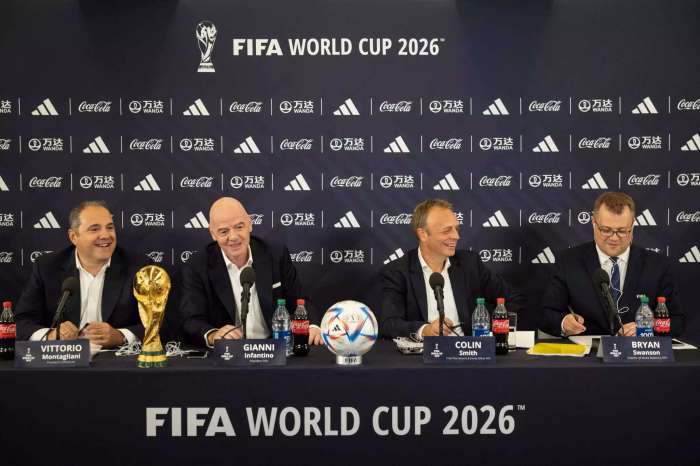
The 2026 FIFA World Cup will employ a comprehensive marketing and sponsorship strategy to maximize its global reach and revenue generation. The tournament will leverage its massive fan base, diverse audience, and international appeal to attract major sponsors from various industries.
Major sponsors will play a pivotal role in the success of the World Cup. They will provide significant financial support, branding exposure, and access to exclusive marketing opportunities. In return, sponsors will receive high-profile visibility, association with the world’s most prestigious sporting event, and the opportunity to engage with a global audience.
Ethical Considerations
The involvement of major sponsors raises ethical considerations regarding the promotion of products and services. FIFA has implemented strict guidelines to ensure that sponsorships align with the values of the World Cup and do not promote harmful or controversial products or practices.
Historical Context and Past Tournaments

The 2026 FIFA World Cup will mark the 23rd edition of the quadrennial international men’s football championship. The tournament will be co-hosted by the United States, Canada, and Mexico, becoming the first World Cup to be hosted by three nations and the second to be hosted in North America after the 1994 edition in the United States.
The FIFA World Cup has a rich history and has played a significant role in shaping the sport of football and global culture. The first tournament was held in Uruguay in 1930, and since then, the World Cup has grown into one of the most prestigious sporting events in the world. The tournament has been won by 8 different nations, with Brazil holding the record for the most titles with 5.
The 2026 FIFA World Cup will be the first to feature 48 teams, up from 32 in previous tournaments. This expansion will give more countries the opportunity to participate in the World Cup and will likely lead to a more competitive and exciting tournament.
The 2026 FIFA World Cup will also be the first to use video assistant referees (VAR) throughout the tournament. VAR was first used at the 2018 FIFA World Cup in Russia and has been credited with reducing the number of incorrect decisions made by referees. The use of VAR is expected to make the 2026 FIFA World Cup even more fair and competitive.
In addition to the changes in format and technology, the 2026 FIFA World Cup will also have a significant cultural impact. The tournament will be held in three different countries, each with its own unique culture and traditions. This will give fans from all over the world the opportunity to experience different cultures and traditions while enjoying the World Cup.
The 2026 FIFA World Cup is shaping up to be one of the most memorable and exciting World Cups in history. The tournament will feature more teams, more technology, and more cultural diversity than ever before. The 2026 FIFA World Cup is sure to be a global sporting event that will be remembered for years to come.
Final Summary
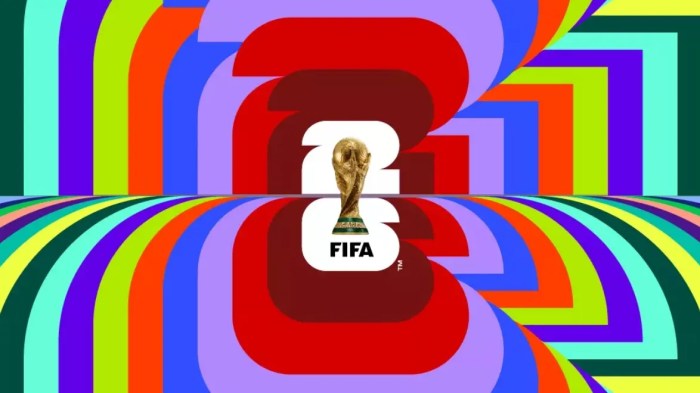
The 2026 FIFA World Cup promises to be an unforgettable celebration of soccer, bringing together nations, cultures, and fans from every corner of the globe. As the tournament unfolds, we can expect to witness breathtaking matches, inspiring stories, and the crowning of a new world champion. The legacy of the 2026 FIFA World Cup will extend far beyond the final whistle, leaving a lasting impact on the host countries, the sport of soccer, and the world at large.
Clarifying Questions: 2026 Fifa World Cup
When will the 2026 FIFA World Cup take place?
The 2026 FIFA World Cup will take place from June 8 to July 3, 2026.
Which countries will host the 2026 FIFA World Cup?
The 2026 FIFA World Cup will be jointly hosted by the United States, Canada, and Mexico.
How many teams will participate in the 2026 FIFA World Cup?
48 teams will participate in the 2026 FIFA World Cup, an increase from the 32 teams that participated in previous tournaments.